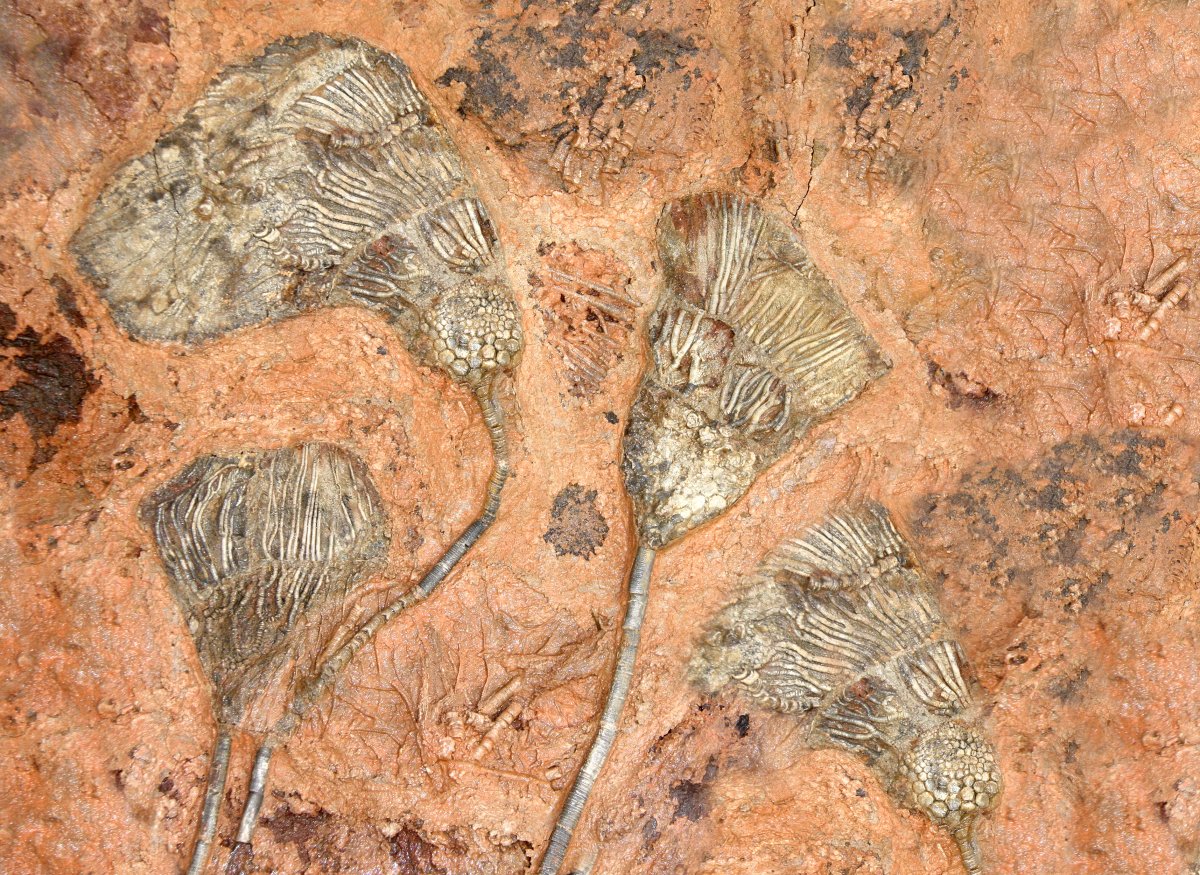A TikTok user's video of him finding a sea fossil on top of a mountain has gone viral, and many people have rushed to claim it as proof of the Great Flood—but paleontologists have different ideas.
The fossil was discovered by TikTok user @tidalwavemoney, who shared it online on November 12. "I'm at 8,300 ft right now and inside of this rock is this squid thing, and what are those in front of its head?" he asked followers.
After zooming out, the man showed the fossil to be inside of a large rock, with tentacle-like shapes coming from it and a line of discs in front.
With 3 million views, many drew comparisons to it looking like an alien, while others suggested it was evidence of the Great Flood, as in the Bible.
Newsweek asked paleontologists, who all agreed that the fossil was clearly a crinoid—which belong to a group of sea creatures called echinoderms, related to starfish, sea urchins and sand dollars. The crinoid was likely from the Palaeozoic era, making it between 250 and 500 million years old.
"What the gentleman has found is actually a beautiful preserved fossil crinoids, also known as a sea lily," said Natural History Museum curator Tim Ewen.
"Crinoids have a stem which is anchored to or resting on the seafloor, which raises the body (large round part in the video) and arms off the seafloor. This is so that the animal can feed more effectively in the water above the sea floor. These arms are beautifully preserved in this specimen and would have been used to catch tiny floating food particles. The food would have been collected by the tube feet – small tentacle-like soft tissue structures – located on the fine feather-like extensions along the arms which are shown very well in this specimen. The mouth of the animal was located at the base of the arms on top of the rounded body."
"Crinoids are still alive today and but those with stalks now live in water over 100m deep and are seldom encountered by people. However, in the past stalked crinoids were commonly found in shallow water (just rarely preserved whole!). In today's shallower water only highly mobile stalk-less crinoids called feather stars are present.
Finally, crinoids look like many people's idea of aliens. That is partly because several aliens featured in the movies have been inspired by the look of crinoids and partly because they just look weird!"
Aside from the fossil being an alien, internet users also had other theories behind its existence and especially how a sea creature could end up so high on land.
"Fossilised sea creatures can be found on a mountain top. It's almost like there was a great flood," commented one user, referring to the biblical story of Noah and his Ark.
Instead however, there is a factual reason for this, as explained to Newsweek by paleontologists: tectonic plates.
"When we find these fossils it tells us that these rocks were laid down in marine conditions, i.e. under the sea. The reason they're now up a mountain is due to plate tectonic processes like mountain building. When the continents collide together it results in large scale tectonic forces that uplift the land, pushing rocks upwards to create mountains," Dr Katie Strang said.
Dr Jo Hellawell, the executive officer of The Palaeontological Association, agreed, telling Newsweek: "Rocks with marine fossils in are found in many mountain ranges due to the movements of the Earth: tectonic plate movements push up mountain ranges and can uplift rocks that were once deep within the crust. Many fossils then become exposed due to weathering processes."
Noah's Ark might be one of the most recognizable stories from the Bible, but according to experts, this TikTok find isn't exactly proof of it.

Uncommon Knowledge
Newsweek is committed to challenging conventional wisdom and finding connections in the search for common ground.
Newsweek is committed to challenging conventional wisdom and finding connections in the search for common ground.
About the writer
To read how Newsweek uses AI as a newsroom tool, Click here.








